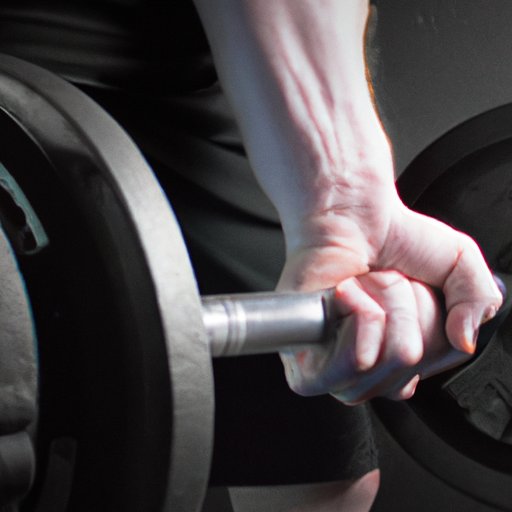
Can I Lose Weight By Lifting Weights Only?
Losing weight can be a challenging feat for many people. While many are focused on doing cardio exercises, some are interested in lifting weights to shed those extra pounds. But can lifting weights alone effectively aid weight loss? This article will explore that question and provide a beginner’s guide to weightlifting for weight loss, the science behind lifting weights for weight loss, the benefits of lifting weights over cardio, tips and strategies on creating an effective weightlifting routine, mistakes to avoid when lifting weights for weight loss, and real-life success stories and testimonials.
A Beginner’s Guide to Weightlifting for Weight Loss
In order to understand if lifting weights can lead to weight loss, it’s important to understand the basics of weightlifting. According to the American Council on Exercise (ACE), weightlifting is a type of strength training that uses weights or resistance to build strength and endurance. To get started, it’s best to work with a certified trainer or start with lighter weights and gradually increase the weight and reps as strength improves. Proper form and technique is key to avoid injury.
The Science Behind Lifting Weights for Weight Loss
Strength training, such as weightlifting, is an effective tool for weight loss. The more muscle one has, the more calories they burn at rest. Weightlifting has been shown to increase metabolism and burn calories both during and after exercise. According to a study published in the Journal of Strength and Conditioning Research, women who performed four to six reps of heavy weightlifting, with rest periods of 30 seconds, burned more calories in the 24 hours after exercise than those who did long duration cardio such as running on the treadmill.
Lifting Weights vs. Cardio for Weight Loss
While both lifting weights and doing cardio exercise are effective for weight loss, they burn calories and promote weight loss in different ways. Cardio can burn more calories in a shorter amount of time but can also lead to muscle loss, while weightlifting can increase muscle mass, thereby leading to increased calorie burn.
The best way to maximize weight loss is to incorporate both cardio and weightlifting into a fitness routine. Cardio can be done on off days from weightlifting while also incorporating compound weightlifting exercises such as squats and deadlifts, which also provide cardio benefits.
How to Create an Effective Weightlifting Routine for Weight Loss
An effective weightlifting routine is one that targets specific muscle groups on different days of the week and involves compound movements such as squats and deadlifts. It’s also important to progress by increasing weight and reps to continue to challenge the body and avoid plateauing. A 2016 study published in the Journal of Obesity found that performing eight repetitions of weightlifting with a weight that challenges the body can be an effective method for weight loss.
The Benefits of Lifting Weights for Weight Loss
Beyond just shedding pounds, lifting weights provides a host of benefits, including improved overall health, reduced risk of injury, and increased muscle mass. According to the ACE, lifting weights can also improve cardiovascular health, decrease the risk of type 2 diabetes, and strengthen bones.
Mistakes to Avoid When Lifting Weights for Weight Loss
Unfortunately, many mistakes can occur when lifting weights for weight loss. Some common mistakes include not warming up properly, not eating enough protein, using improper form, neglecting other types of exercise, and not allowing enough time for recovery. To avoid these mistakes, it’s important to work with a certified trainer and incorporate proper form and techniques, eat adequate protein, and allow for ample time for rest and recovery.
Transform Your Body with Weights: Real-Life Success Stories and Testimonials
Real-life success stories can provide motivation and inspiration for those on a weight loss journey. For example, Chris Pratt, the actor best known for his role in Guardians of the Galaxy, lost over 80 pounds by incorporating weightlifting into his fitness routine. Similarly, fitness model Ashley Horner started lifting weights and lost over 30 pounds.
Conclusion
While lifting weights alone may not lead to significant weight loss, it can be an effective tool when combined with a healthy diet and cardio exercise. Lifting weights provide a host of benefits, beyond just shedding pounds, including improved overall health, reduced risk of injury, and increased muscle mass. By incorporating proper form and techniques, gradually increasing weight and reps, and allowing enough time for rest and recovery, lifting weights can be a highly effective method for losing weight and maintaining overall health.


